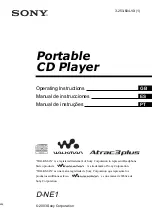
Chapter 1
NI-DNET Software Overview
©
National Instruments Corporation
1-3
Configure DeviceNet Port
The physical port of each DeviceNet card is listed under the card’s name.
To configure software properties, right-click the port and select
Properties
.
In the
Properties
dialog, you assign an interface name to the port, such as
DNET0
or
DNET1
. The interface name identifies the physical port within
NI-DNET APIs.
Change Protocol
To change the default protocol for the DeviceNet (CAN) card, right-click
the card and select
Protocol
. In this dialog you can select either
DeviceNet
for NI-DNET (default), or
CAN
for NI-CAN. For more information, refer
to the section
.
LabVIEW Real-Time (RT) Configuration
LabVIEW Real-Time (RT) combines easy-to-use LabVIEW programming
with the power of real-time systems. When you use a National Instruments
PXI controller as a LabVIEW RT system, you can install a PXI DeviceNet
card and use the NI-DNET APIs to develop real-time applications. For
example, you can control a network of DeviceNet devices as a master, and
write your control algorithm in LabVIEW.
When you install the NI-DNET software, the installer checks for the
presence of the LabVIEW RT module. If LabVIEW RT exists, the
NI-DNET installer copies components for LabVIEW RT to your
Windows system. As with any other NI product for LabVIEW RT, you then
download the NI-DNET and NI-CAN software to your LabVIEW RT
system using the
Remote Systems
branch in MAX. For more information,
refer to the LabVIEW RT documentation.
After you have installed your PXI DeviceNet cards and downloaded the
NI-DNET software to your LabVIEW RT system, you need to verify
the installation. Within the
Tools
menu in MAX, select
NI-DNET»
RT Hardware Configuration
. The
RT Hardware Configuration
tool
provides features similar to
Devices & Interfaces
on your local system.
Use the
RT Hardware Configuration
tool to self-test the DeviceNet cards
and assign an interface name to each physical DeviceNet port.
Tools
NI-DNET provides tools that you can launch from MAX.













































